Celebrating Collaboration of Bench and Bar
The New York Law Journal by Jonathan Lippman - January 26, 2009
Over the years, I have had the privilege of serving the Judiciary in varying roles that have given me a bird's-eye view of the positive changes that have taken place throughout the profession. In many respects, the legal world today is a much different place than it was 15, or even 10, years ago. Both the courts and the practice of law have been transformed on a broad range of issues. Many of the advancements that have made the practice of law more convenient, such as the ability to view court calendars and court decisions online, have been the result of courts and practitioners taking full advantage of the technological innovations that are changing the nature of everyday life. Indeed, much of the progress in shaping our profession for the better has been the result of the spectacular partnership between the courts and the bar. I thought it would be instructive during State Bar week to highlight just a few of the most successful collaborations that have now become staples of the court system and the profession in New York.
The Commercial Division
The existence of the Commercial Division of the Supreme Court in New York, today so often the parties' venue of choice to resolve commercial disputes, is a prime example of the outstanding things that bench and bar can accomplish together. The impetus behind the creation of the Commercial Division was a report with recommendations by the Commercial and Federal Litigation Section of the New York State Bar Association. A joint bench-bar task force then worked to implement the Section's proposal and, as we know, the results have been strikingly effective in attracting and retaining business in our state. The creation of a part of the Supreme Court devoted to commercial matters has improved the business community's confidence in our courts and allowed us to become a desirable and worthy forum for the litigation of complex commercial issues. Another example of important changes generated by a joint bench-bar committee were the recommendations made by the Committee on the Profession and the Courts, more commonly known as the Craco Committee.
Work of Craco Committee
That panel was organized to examine public attitudes toward the courts and the legal profession. The combined perspectives of both attorneys and judges helped provide a comprehensive view of the profession and a superb opportunity to achieve consensus on meaningful reforms that better serve the public in our state. One such development has been the implementation of mandatory continuing legal education for all attorneys. The CLE requirement was instituted in 1998, with a more intensive "bridge-the-gap" component for newly admitted attorneys. Initially the subject of some controversy and anxiety, CLE quickly became a valued part of the professional landscape in New York, enabling attorneys to hone their legal skills and stay abreast of recent developments in the law. The establishment of New York's mandatory, statewide Attorney-Client Fee Dispute Resolution Program has been an important tool in helping to resolve issues between attorneys and clients in a more informal, expeditious fashion and in an atmosphere conducive to producing satisfactory results for all concerned.
Fee arbitration helps ease the burden on the courts by resolving these cases through ADR while providing clients with a convenient, inexpensive means to address fee disputes, which are one of the main sources of public dissatisfaction with the legal profession. In certain jurisdictions, including the First Department, the program is administered by local bar associations. Thus, the cooperation of the legal community is critical to the program's success. Another notable outgrowth of the Craco Committee's recommendations was the creation of the letter of engagement rule (Part 1215), which requires that, prior to undertaking representation, an attorney provide a client with a letter of engagement explaining the scope of services to be rendered and detailing his or her fees, expenses and billing practices. This requirement allows clients to see up front exactly what types of charges they will incur and in this way helps to avoid misunderstandings and fee disputes.
Other significant developments arising out of the Committee's recommendations included: adoption of aspirational Standards of Civility for lawyers, judges and court personnel; amendments to court rules (Part 130) authorizing the imposition of costs and sanctions for frivolous conduct in civil litigation; and the requirement that each attorney's office post a statement of client's rights. All of these reforms are enhancing public trust and confidence in the legal profession by promoting accountability and mutual respect. The success of the many specialized court parts that have been introduced in the New York courts over the last several years would not have been possible without the active cooperation and support of the bar.
Specialized Courts
In this regard, the introduction of Integrated Domestic Violence (IDV) Courts has had a significant impact on the court system and those who practice family law. These courts have greatly improved the legal experience for parties who are no longer shuttled from court to court, but instead have their issues addressed in a single court before a single judge who is aware of all aspects of the parties' situation. Other types of problem-solving courts, like our drug courts or community courts, have also taken a more practical approach to justice by simplifying the court structure and adjusting the disposition to fit the realities of the situation, whether that involves incarceration or, where appropriate, drug treatment, community service or a mentoring program. These unconventional courts required considerable flexibility by and coordination with the institutional and private bars in our state in order to achieve better outcomes for litigants and society.
Jury Reform
Jury reform has likewise brought about a great improvement in the public perception of the courts. It is by now well-documented that back in the early 1990s the jury system was greatly flawed and inefficient. The system is now vastly improved thanks in large part to the early support of the organized bar, which was so helpful in achieving the legislative elimination of automatic exemptions, including those for lawyers and judges. The profession recognized the importance of such change to improving the public's view of the fairness of the system.
Further, the cooperation of the bar has been necessary to the goals of commencing voir dire and trials without delay and reducing the perception that the impanelment of the jury is used solely to induce settlement. The continued success of jury reform in the state can in large measure be attributed to bench-bar collaboration in upgrading this bedrock of our justice system. Most recently, our Code of Professional Responsibility was substantially revised and adapted to the format of the ABA Model Rules. The new Rules of Professional Conduct harmonize New York's ethical standards with those in place throughout the majority of the country.
The State Bar issued a proposal, after exhaustive study and analysis, for a new Code in keeping with the ABA Model Rules. The Administrative Board then undertook its own process of review and revisions, ultimately resulting in the adoption of our new Code by the Appellate Divisions. There could not be a better example of the Judiciary and the organized bar collaborating productively on a matter of great significance to the entire legal community. We should all take pride in the many positive changes that have come about in recent decades due to the partnership between the members of the bench and bar. We have been able to transform the courts and the profession in so many enduring ways. Without question, this fruitful relationship will be the recipe for many more important advances in the years to come.
Jonathan Lippman
Presiding Justice, Appellate Division, First Department and
Nominee for Chief Judge Of the State of New York
MLK said: "Injustice Anywhere is a Threat to Justice Everywhere"
End Corruption in the Courts!
Court employee, judge or citizen - Report Corruption in any Court Today !! As of June 15, 2016, we've received over 142,500 tips...KEEP THEM COMING !! Email: CorruptCourts@gmail.com
Most Read Stories
- Tembeckjian's Corrupt Judicial 'Ethics' Commission Out of Control
- As NY Judges' Pay Fiasco Grows, Judicial 'Ethics' Chief Enjoys Public-Paid Perks
- New York Judges Disgraced Again
- Wall Street Journal: When our Trusted Officials Lie
- Massive Attorney Conflict in Madoff Scam
- FBI Probes Threats on Federal Witnesses in New York Ethics Scandal
- Federal Judge: "But you destroyed the faith of the people in their government."
- Attorney Gives New Meaning to Oral Argument
- Wannabe Judge Attorney Writes About Ethical Dilemmas SHE Failed to Report
- 3 Judges Covered Crony's 9/11 Donation Fraud
- Former NY State Chief Court Clerk Sues Judges in Federal Court
- Concealing the Truth at the Attorney Ethics Committee
- NY Ethics Scandal Tied to International Espionage Scheme
- Westchester Surrogate's Court's Dastardly Deeds
Monday, January 26, 2009
Chief Judge Nominee Lippman Celebrates Bench and Bar Collaboration
Subscribe to:
Post Comments (Atom)
Blog Archive
-
▼
2009
(554)
-
▼
January
(66)
- Ethics Experts Say Former Partners Could Face Liab...
- Lawyer Tells Truth in Mayor's Corruption Arrest
- Manhattan Lawyer Steals $396,000 from Client
- MADOFF LAWYER'S OTHER FRAUDSTER
- Judge OKs Bail for 'Mini-Madoff'
- Worthy of Review: A Chief Judge For Silver?
- Senator Sampson Urged to Issue Subpoenas Into Cour...
- Lucky Week: Two More Madoff Copycats Arrested
- Chief Judge Nominee Lippman Celebrates Bench and B...
- EDITORIAL: Bruno's indictment should spur ethics r...
- The State of New York Under Indictment
- Albany Politics: An Unethical Three-Ring Circus
- Bruno indicted, Traded Power for Money
- BREAKING NEWS: Bruno Federal Corruption Indictmen...
- Three Cheers for Paterson's Senate Pick
- Dreier Continues to Sit in Jail, Madoff in Lap of ...
- NY Lawyer Charged with Stealing $700,000.
- Real Ethics Oversight Coming Soon to New York
- Senator Sampson to Hold NYS Chief Judge Hearings
- First Amendment Sacred, Except When Criticizing Ju...
- Greed Ends Banking Money Pit, Ethical Abuses On La...
- Urgent Call to All Americans
- New York Times: How Much Should Judges Make?
- Madoff Wacks Minneapolis, Failed NY Ethics Oversig...
- NY Trained Attorney Pulls $350 million Madoff Scam...
- Albany Times Union Editorial on Chief Judge: On th...
- Henry Stern on Paterson's Lippman Pick
- Any Attorneys Involved in Latest Bank Fraud?
- NY Lawyer Cannot Be Prosecuted for Giving Advice, ...
- NYS Senator John L. Sampson Accepting Input on Chi...
- Public Integrity Call for US Senate Inquiry
- NY Post Editorial: CHIEF-JUDGE INJUSTiCE
- Watch Governor Paterson on Chief Judge Lippman App...
- NY Post and NY Daily News on Paterson Lippman Pick
- OCA Press Release on Paterson Pick of Chief Judge ...
- NYLJ: Paterson Set to Nominate Lippman as Chief Judge
- Call for Public Hearings on Corruption in the NY S...
- Ethics Architect John Feerick Gives Up on New York...
- Ethics Attorney Violated Orders to Cover-Up, Says ...
- Ignored Conflicts Haunt More "Officers of the Courts"
- Federal Lawsuit Exposes Ugly Retaliatory Injustice
- NEW WAR OVER ASTOR LAWYER
- NY Daily News EDITORIAL on NY HIgh Court Judicial ...
- Follow the Money, and The Fingerprints of Greedy L...
- More States Should Follow Beantown Ethics Overhaul
- Lawyer Who Duped Judge May Face Rap
- Suspended Attorney Dreier Needs Money To Pay Defen...
- Hero Judge of the Day
- Disbarred Fagan Sues Judge Who Sanctioned Him
- Federal Judge Pleads Not Guilty to Charges
- Feds Push Judge to Jail Madoff
- Bernie Burns NYU For $94 Million
- SEC Watchdog Lawyer Who Missed Madoff
- Massive Attorney Conflict in Madoff Scam
- New Year, New Court Corruption Exposed: Bailiff Ta...
- Madoff Transferred $1 Million, Feds Want Him in Pr...
- Paybacks and Kickbacks via Foundations
- NY Chief Judge UPDATE (Chief Judge Theodore T. Jon...
- Whistleblowers File Federal Suit Against State Att...
- Madoff Subpoenas To Shed More Light on Ethics Over...
- Add Misprison of Felony to Resume of Attorney Marc...
- Long Island Famiy Sues Madoff over $2 Million
- SEC Eyes More Madoff Ponzi Schemes
- Madoff Took $10 Million 6 Days Before Arrest
- Chief Judge: Paterson's Most Important Appointment
- Former DDC Chief Counsel Hal Lieberman Strikes Again
-
▼
January
(66)
See Video of Senator John L. Sampson's 1st Hearing on Court 'Ethics' Corruption
The first hearing, held in Albany on June 8, 2009 hearing is on two videos:
Video of 1st Hearing on Court 'Ethics' Corruption
The June 8, 2009 hearing is on two videos:





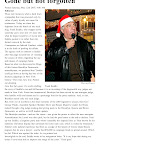

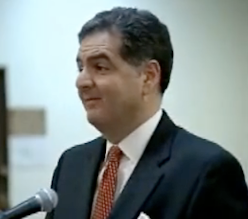
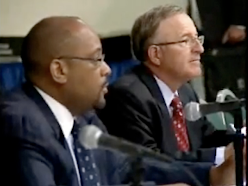
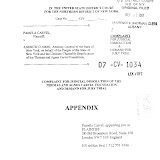

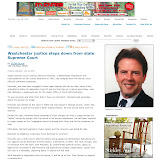
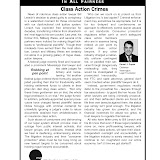

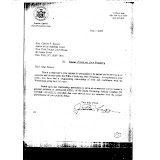
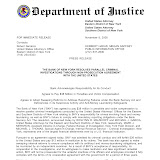
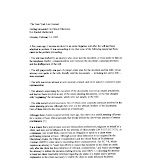
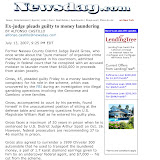
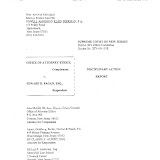
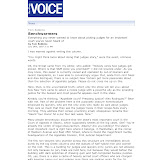

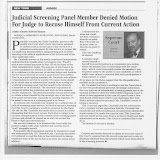



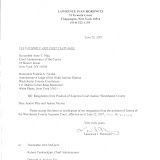
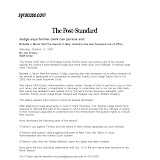
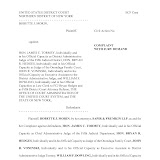

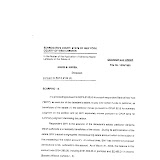
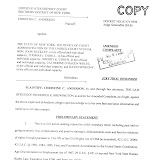
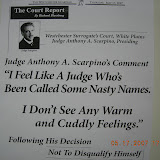

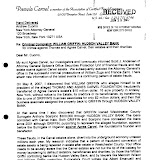
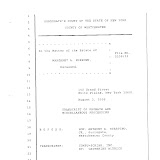
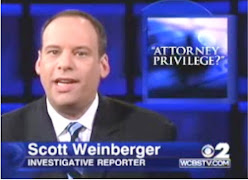
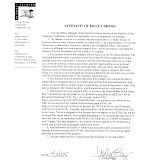
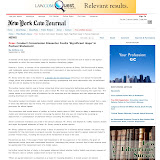
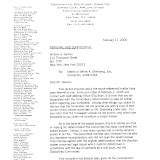
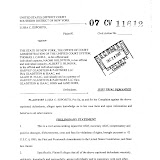
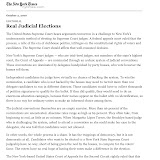
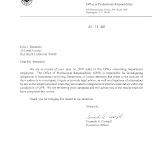
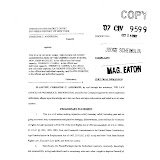
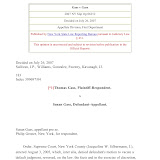
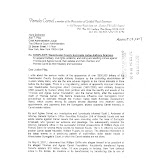

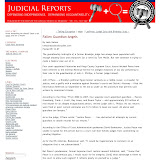
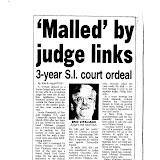
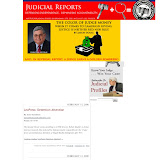
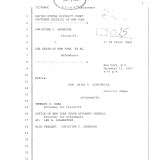
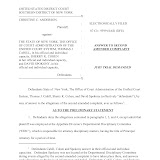
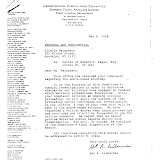
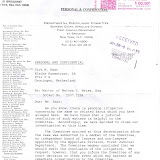
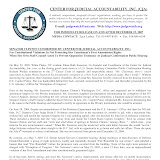


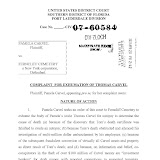
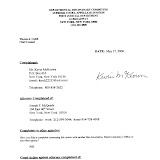
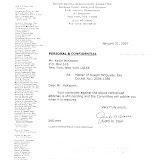
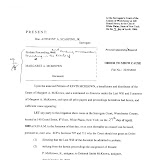
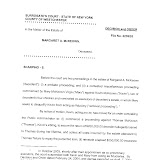
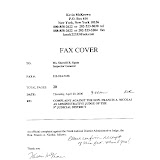

19 comments:
Hardly a time to celebrate: New York's cesspool of a court system. Not surprisingly, Mr. Lippman doesn't mention the poor folks who have been screwed by the court corruption he remained silent about: judges, lawyers, state workers, litigants, families and young children.
His article shows how out of touch he is with reality and why he should NEVER become chief judge of anything.
What connections or involvements does Lippman have in the Westchester Matrimonial Shake-up.
Montagnino, Donovan, Nicholai etc?
Would it be asking too much for Judge Lippman to discuss the low opinion everyone has on the level of ethics on the bench and throughout the state bar. And what he might do about it. I agree: he's out of touch!
Yeah, all the gangsters are all together to steal more from the suckers with Jonathan Lippman in charge, only in America!
to post at 12:33
Lippman ignored complaints made directly to him about the misconduct of these people.
He was the administrative judge when the New York Law Journal printed the article where Montagnino said that he had specific knowledge of case fixing by Nicolai, and did nothing.
Did Lippman ever explain how he became the presiding justice of the first department when he lives in the second department?
Isn't there some law or rule that judges are supposed to live in the department they rule in?
Especially if the are in charge?
Hey Judge ? Whats your point? Why now? Do you think you're a 'done deal' ? Are you suggesting yourself as largely responsible for these 'cutting edge' innovations? And why are you 'sucking up' only to the Bar?
WHAT ABOUT ALL THE NON-LAWYERS WHO ARE CHEATED, DEFRAUDED, ABANDONED, AND FORGOTTEN BY THE COURTS?
DO YOU EVEN KNOW ABOUT THEM?
DO YOU KNOW THEY EXIST?
The "Craco Committee" was another public relations/waste of taxpayer money/abuse of office, stunt by Kaye.
Just like all the other "committees" she empanled, which are not authorized by law for her to do so that they can cite how great a job they are doing, and why judges need a raise.
The matrimonial committee Kaye put together, consisted entirely of lawyers and one person related to matrimonial litigation.
A huge waste of time and money.
Looks like Lippman intends to continue on just like Kaye.
No surprise.
Glad you're proud of yourself asshole.
You are a disgrace to your profession and a menace to society.
The commercial part is a criminal enterprise that has spawned a good part of the global financial meltdown.
Go to hell, Jon Lippman
Oh Lippman...up here in WNY...you forgot to mention you did not tell the 8th judicial district..esp Buffalo City Court...that you have an "Aspirational Standard of Civility for Court employees..in affect!
Do you think that your employees believe that HOSTILE ENVIRONMENT..AND VIOLATIONS OF THE CONSTITUTIONAL AMENDMENTS... and SPECIFICALLY THE CIVIL RIGHTS ACT OF 1964...are major components of aspirational standards of civility?
Well...while you are tooting your horn or everything else that goes with your" tooting"...you have big trouble up here and you are well aware of it. All the boasting and tooting you can release...will not make this story go away... which was a big part of Kaye's....anti- female and minority plot for non-political employees.... who were bound to ethics in their performance of their duties for their tax paid positions.
All the while, you sat comfortably as a high level administrator for OCA, condoning the behavior of the court system's abusive, violent and retaliatory activities, that violate NY criminal STATUTES.
Explain that fiasco to the bar, the bench and the world...and see what response you get from the innocent NY citizens reading this blog..who want all the juicy details!
HOT DAMN! AM I GLAD I FOUND THIS BLOG
Paraphrasing T. Roosevelt. With NY judges and the NY Bar, in 9 out of 10 cases they would be better off dead and in the tenth case don't ask too many questions.
I would ask what the Hell that's supposed to mean, but I'm dead and cant ask too many questions
Answer to 13: dead and in Hell and suffering eternally. Or not corrupting our legal system. Explanation to the brain dead: The judges and NY Bar have negative value and everyone honest person would be better off without them.
Dear "VICTIM"
Welcome aboard! Join us in writing to the Senate Subcommittee about Lippman's crimes.
LIPPMANN not so fast...What's the saying?..It's not over until the FAT lady sings..and I don't hear anyone singing yet...DO YOU?
Has Bruno started a counter-attack yet!?!?!?!
Sit back and enjoy the show: the dirty judges and lawyers and back-room-dealers are going to all eat each other alive !!
Who will Bruno finger to keep himself from dying of old age in prison?
There is no honor among thieves.
Who will Bruno finger to keep himself from dying of old age in prison?
There is no honor among thieves.
Post a Comment